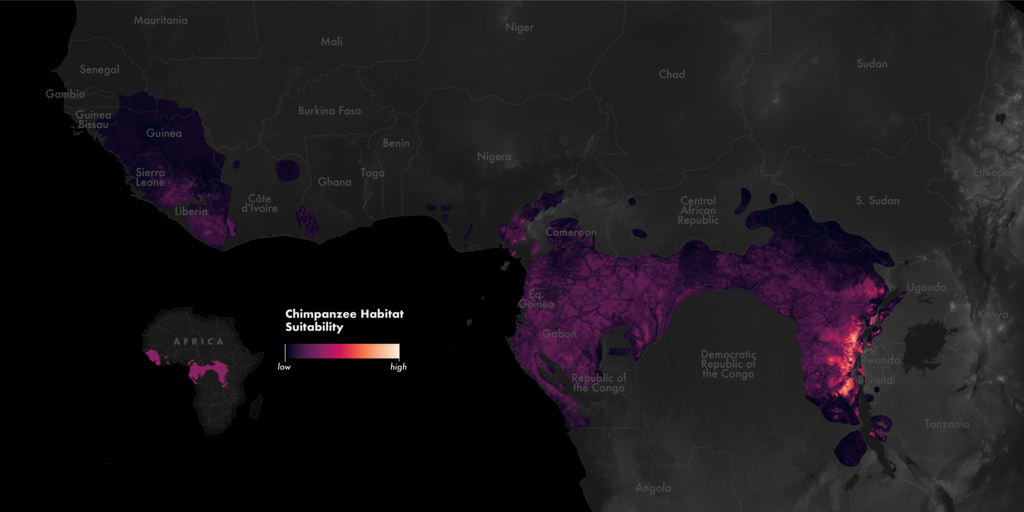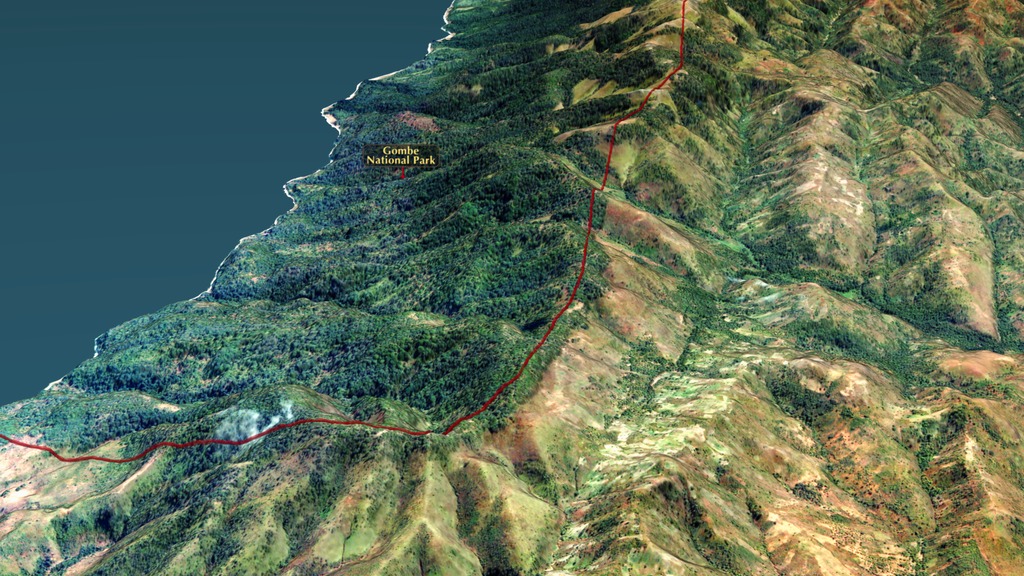Reforestation in Kigoma region of Tanzania: 2005 - 2014
This visualization begins by showing the location of the village of Kigalye, south of the Gombe National Park in Tanzania. The topography of that region is draped with a satellite image taken on May 14, 2005. As we fly up the valley between Kigalye and the park, scars from deforestation cover much of the landscape.
In partnership with the Jane Goodall Institute (JGI), NASA scientists have provided assistance in monitoring, forecasting and in the conservation of habitats across chimpanzee range in Africa. Between 1972 and 1999, significant deforestation had occurred in the region outside the boundary of the Gombe National Park, Tanzania to the detriment of the park's chimpanzee population as well as to the that of the local communities living in the region.
In 2005, JGI initiated a forest monitoring program, training, and in 2009 equipping, community members with GPS-enabled Android smart phones or tablets to report their observations on forests threats and wildlife. Combining NASA remote sensing data with citizen science observations assisted the local communities and district governments in developing and implementing land use plans, leading to improved decision making and facilitating the establishment of village land and district forest reserves.
This visualization shows the reforestation that occurred due to this effort in the Kigoma Region of Tanzania, just south of the Gombe National Park between 2005 and 2014. From a global view, we zoom to the village of Kigalye, Tanzania on the coast of Lake Tanganyika. The two visualizations shown here follow the identical view but reflect the state of the region in these two different years. Satellite images from each year are shown blanketing the topography of this region allowing us to compare the forest cover change. We stop at the village of Kigalye in order to view the location where a landslide had done significant damage prior to 2005 and slowly move northward up the valley over Kizuka stream to the southern border of the Gombe National Park.
With the information provided by the forest monitoring program, local communities that are better equipt for planning and managing their natural resources have made a positive impact on forest regeneration in the region.
This visualization begins by showing the location of the village of Kigalye, south of the Gombe National Park in Tanzania. The topography is draped with a satellite image taken on June 12, 2014. As we fly up the valley between Kigalye and the park, we see that significant reforestation through natural regeneration has occurred throughout this region.


Compare the vegetation shown here from two satellite images taken in 2005 and 2014 near the village of Kigalye, located just south of the Gombe National Park in Tanzania. The image on the left is from May 14, 2005. The image on the right is from June 12, 2014.

This image shows the location of the Gombe National Park, show in a solid green color, along Tanzania's coast bordering Lake Tanganika. Below the park we see the rectangular region draped with the satellite data. The village of Kigalye is shown in the lower left-hand corner of this rectangular region.
Credits
Please give credit for this item to:
NASA's Scientific Visualization Studio
-
Visualizers
-
Cindy Starr
(Global Science and Technology, Inc.)
-
Greg Shirah
(NASA/GSFC)
- Michala Garrison (SSAI)
-
Cindy Starr
(Global Science and Technology, Inc.)
-
Producer
- Jefferson Beck (USRA)
-
Scientist
- Lilian Pintea (The Jane Goodall Institute)
-
Project support
- Eric Sokolowsky (Global Science and Technology, Inc.)
- Ella Kaplan (Global Science and Technology, Inc.)
-
Technical support
- Ian Jones (ADNET Systems, Inc.)
- Laurence Schuler (ADNET Systems, Inc.)
Datasets used
-
High-resolution satellite imagery (High-resolution satellite imagery) [GeoEye-1]
ID: 1160 -
[QuickBird-2: Ball Global Imagery System 2000]
ID: 1190
Note: While we identify the data sets used on this page, we do not store any further details, nor the data sets themselves on our site.
Release date
This page was originally published on Wednesday, September 13, 2023.
This page was last updated on Monday, June 23, 2025 at 12:13 AM EDT.



